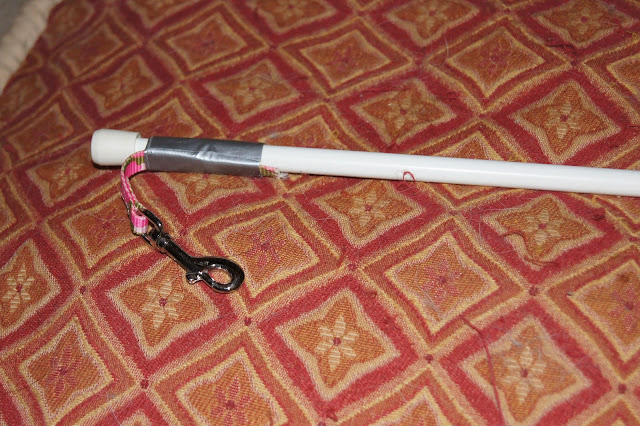Now begins the season of taking holiday photos. Some will take dogs (and cats!) to see Santa for pictures. Some will pose the family animals with the family humans of all ages and capture memories forever more.
 |
| Tulle collar. |
These adorable collars are not hard to make, and you can be creative in your use of materials and colors to match your dog's personality and the occasion.
Cut elastic into strips that will easily fit around your dog's neck without stretching. Without stretching the elastic, the collar should fit close to your dog's neck but not tight. Add an inch to that length and cut the strip that length. The extra inch is to allow for you to tie the ends together easily to create a circle. Cut off any loose ends after you tie it.
Tulle cut into strips can make a fluffy, tutu-type collar. How long you cut the strips will determine how fluffy the collar will be. You can fold the tulle strip in half and hold it on the elastic collar to see how far it will stick out. Adjust your tulle strips accordingly.
There are a couple ways to attach the tulle. One is to simply tie the tulle to the elastic with knots. I prefer to use slip knots. To make a slip knot, fold each strip in half. You will then have a folded end and two loose pieces at the other end. The two loose ends go underneath the elastic collar strip and curl around the elastic, so you now have the elastic in the middle. Then slip the two loose ends into the hole created by the folded end and pull the loose ends through until it tightens on the elastic. (See photo below) Don't pull too hard. Just hard enough to have it tied around the elastic. Continue in this way until the entire collar has been filled.
 |
| Shown with ribbon because it's easier to see. |
Ribbon collars are also pretty. Choose several colors/styles of ribbon that you feel complement each other. Attach them in the same way as attaching the tulle above. It's nice when you cut the ribbon strips to cut the ends of each strip at an angle. It looks fancier and prevents a lot of unraveling.



































